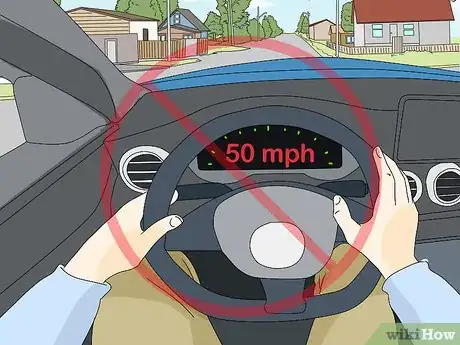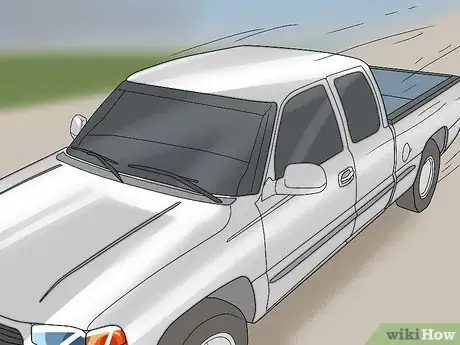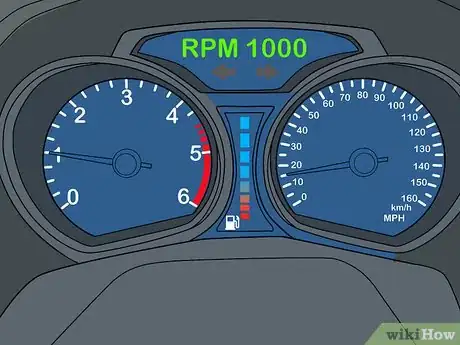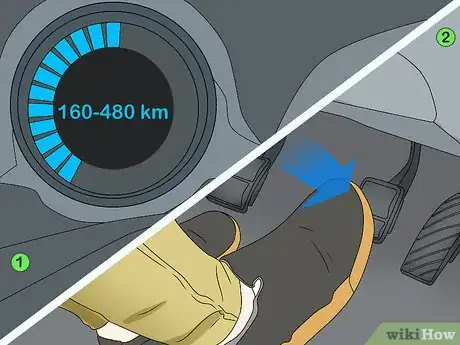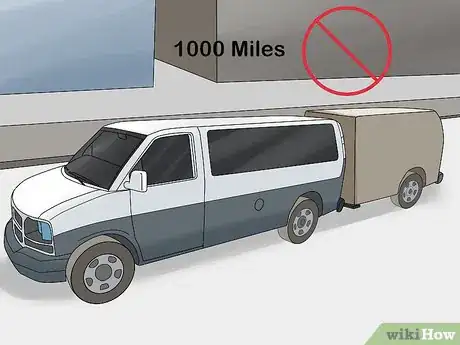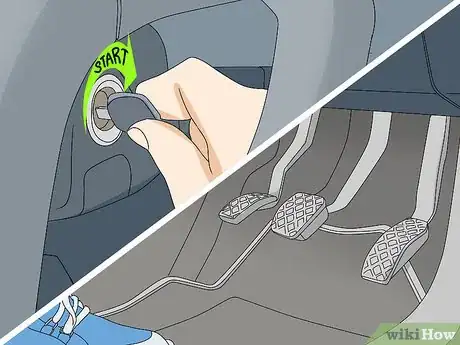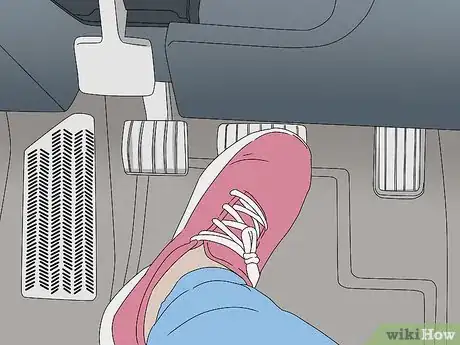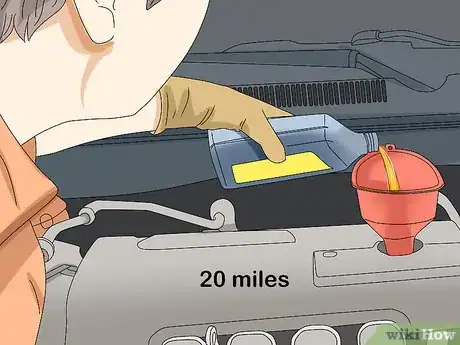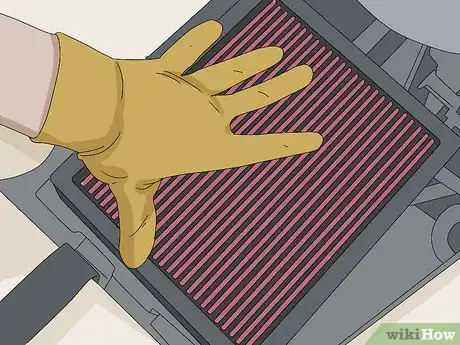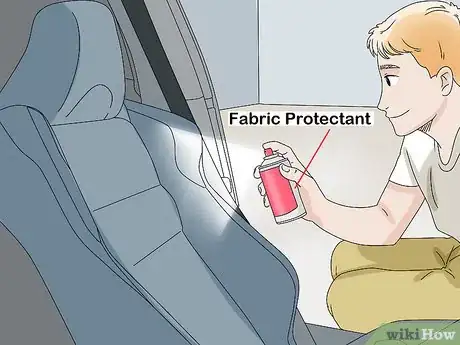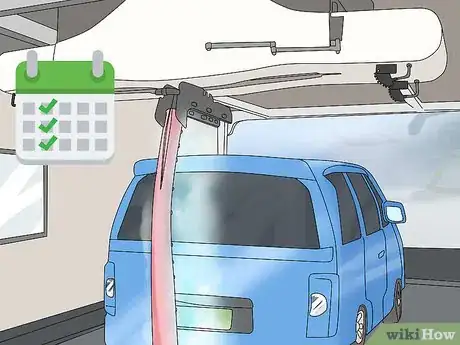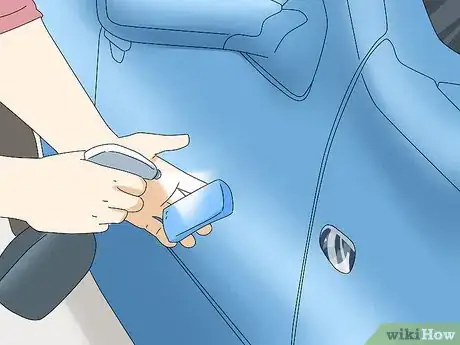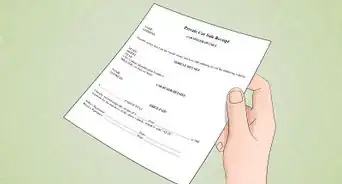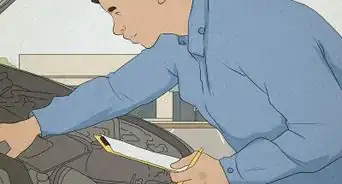This article was co-authored by wikiHow staff writer, Jennifer Mueller, JD. Jennifer Mueller is a wikiHow Content Creator. She specializes in reviewing, fact-checking, and evaluating wikiHow's content to ensure thoroughness and accuracy. Jennifer holds a JD from Indiana University Maurer School of Law in 2006.
This article has been viewed 12,726 times.
Learn more...
Buying a brand-new car is an exciting thing. However, as tempting as it may be to peel out of the dealer's lot and go cruising down the highway, driving a new car this way may cause you significant problems down the road. For a new car engine, the focus of the break-in period is to allow the piston rings of the engine to settle tightly into the cylinder wall. This will ensure your car has the best possible fuel economy and provides you years of trouble-free service. Generally, drive your car gently for the first 1,000 miles (1,600 km) or so, and change the fluids frequently.[1]
Steps
Driving Gently
-
1Drive no faster than 50 miles per hour (80 km/h). Most car manufacturers recommend that you avoid driving a new car at excess speeds for the first 100 to 500 miles (160 to 800 km). This prevents stress on the engine before the piston rings have fully settled.[2]
- After the first 300 miles (480 km) or so, you're usually safe to drive your new car over 50 miles per hour (80 km/h). However, you may want to check your car's owner's manual to be sure. Never drive over the posted speed limit.
-
2Vary your speed during the break-in period. For the first 500 to 1,000 miles (800 to 1,610 km), alter your speed every 5 minutes or so. This ensures you're using the entire range of your car's performance, and keeps parts from wearing unevenly.[3]
- For example, if you're driving on a residential street with a posted speed limit of 45 miles per hour (72 km/h), you might drive 40 miles per hour (64 km/h) for 2 minutes, then slow down to 35 miles per hour (56 km/h) for 4 minutes, then speed back up to 42 miles per hour (68 km/h).
Tip: Rather than hitting the highway in your new car, stick to city streets with stop-and-go traffic for the first 100 miles (160 km) or so. You'll automatically be driving at varied speeds.
Advertisement -
3Watch your tachometer as you drive. Generally, for the first 1,000 miles (1,600 km) or so, keep the revolutions per minute (RPMs, or "revs") below 3,000. In practical terms, this means not flooring the throttle or driving at sustained high speeds.[4]
- If your car doesn't come with a tachometer, rely on sound and feel. If you can hear the engine revving and feel a vibration in the pedals, you're putting too much stress on the engine.
- In mechanical terms, keeping the revs low allows the piston rings to settle into place in the cylinders and create a tight seal, so you won't have oil leaks later on.
-
4Refrain from high-speed stops. For the first 100 to 300 miles (160 to 480 km), apply the brakes slowly and gently. Avoid slamming on the brakes or pressing the brake pedal completely to the floor to stop. Slamming on the brakes could lead to uneven wear of your brake pads, causing uneven braking.[5]
- High-performance sports cars may be the exception. Many are equipped with racing brake pads, which require intense friction to burn off the top layer so they'll work properly.
-
5Avoid towing anything for the first 1,000 miles (1,600 km). Towing a trailer puts an additional load on your engine. Most auto manufacturers recommend a light-load break-in period, during which you don't do anything to significantly add to the weight of the car.[6]
- In addition to towing, avoid loading the new car down with extremely heavy items or materials. You may put too much stress on the engine if, for example, you use your new car to move furniture before it's broken in.
-
6Keep your foot off the throttle when starting your car. When you turn the key to the ignition, your foot should be on the floor, not on the pedal. Avoid revving your engine immediately after starting it, or any time when it's standing still.[7]
- After your car is broken in, you can do all the burnouts and full-throttle starts you want. But during the break-in period, take it easy.
- Allow the piston rings to settle nicely into the cylinder walls first, or you may find later that you burn too much oil – especially if you use high-performance driving techniques.
-
7Use your brake pedal rather than engine braking. It's relatively easy to simply release the throttle and let the engine slow down your car. But in a new car, use your brake pedal so that your brakes settle in along with your engine.[8]
- Engine braking places additional stress on a new engine and may result in the piston rings not forming a tight seal in the cylinders.
Servicing Your Car Regularly
-
1Get your oil changed after 20 miles (32 km). All the friction on the new parts in your engine means your oil will get really clogged with metal shavings and other fragments. Change the oil soon after you buy your new car to keep these fragments from cycling back through your engine.[9]
- Avoid synthetic oil for the first 1,000 miles (1,600 km) or so. Synthetic oil is slicker than conventional oil, and won't provide enough friction to allow the moving parts of the engine to wear together properly.[10]
-
2Change manual transmission fluid after 1,000 miles (1,600 km). If you have an automatic transmission, you typically don't need to worry about the transmission fluid. However, new clutch pads wear down, as do other parts of a new transmission.[11]
- Get the fluid changed after the break-in period and have the sludge cleaned out of the pan. You don't want this debris cycling back through your transmission.
-
3Get another oil change after 1,000 miles (1,600 km). A second oil change at the end of your break-in period ensures no debris from the wearing down of machine parts is clogging up your system. Even if the oil looks relatively clean, fresh oil will ensure your car runs smoothly and gets maximum fuel economy.[12]
- With this oil change, you can switch to synthetic oil if you want. The parts of your engine have already been worn down enough that the additional friction of conventional oil isn't necessary.
Don't worry! While two oil changes within 1,000 miles (1,600 km) may seem like overkill, you won't actually harm your car by changing the oil too frequently – and you may extend the life of your engine and its overall performance.
-
4Replace all filters at the end of the break-in period. Just like your fluids, your car's air and oil filters also catch metal filings and debris while your engine is getting broken in. New filters ensure they continue to work properly.[13]
- If you have your oil changed by a mechanic, they typically will change your oil filter when they change your oil after the break-in period. However, you may want to request ahead of time and make sure they have your car's filter in stock.
Maintaining the Interior and Exterior
-
1Treat upholstery with a fabric protectant. Fabric protectants keep dirt and liquids from being absorbed by the upholstery, which can extend the life of the fabric and keep the seats looking new. If you have leather interior, use a leather protectant to condition the leather and shield it from the sun.[14]
- Use window shades on your windows whenever you are parked in direct sunlight. This will keep the fabric from fading and keep the leather from cracking.
-
2Avoid using protectants on vinyl and trim. While it may be tempting to rub products into your trim to keep it shiny, these products can disturb the finish of new vinyl and plastic trim. Using protectants on new vinyl can cause cracks sooner.[15]
- To clean your trim, dust it with a dry, microfiber cloth. If you have a spill or end up with sticky residue, spray a gentle cleaner on a cloth and clean it off, then dry it off.
- You can buy pre-moistened wipes at auto shops that are made specifically for car vinyl.
-
3Drive through a brushless or touch-less car wash once a week. An automatic car wash is actually better for the environment and cleans your car more efficiently than you could do by hand. Brushless car washes ensure the finish of your paint won't get scratched.[16]
- Avoid many of the add-ons at the automatic wash, as they come with little benefit for the cost. For example, an undercarriage rust protectant is virtually useless since the parts are already covered with a rust protectant.
- Specific washes for wheels are a worthy add-on because scrubbing wheels and rims can be labor-intensive. Automatic car washes can get into crevices you'd have a hard time reaching by hand.
Tip: If you decide to wash your car by hand, only use cleaners designed specifically for car paint. Anything else, especially household cleaning products, could damage your finish.
-
4Wax your car by hand rather than using spray-on wax. The spray-on wax offered as an additional service at many automatic car washes doesn't protect your paint the way hand-waxing does. Wax your car at least once every couple of months, especially if it is exposed to the sun for long periods of time.[17]
- You typically won't have to wax a brand-new car for at least 3 months. Flick some water on your car and see if it beads up. As long as it does, there's no need to wax it.
References
- ↑ https://extramile.thehartford.com/auto/how-to-break-in-a-new-car/
- ↑ https://extramile.thehartford.com/auto/how-to-break-in-a-new-car/
- ↑ https://extramile.thehartford.com/auto/how-to-break-in-a-new-car/
- ↑ https://extramile.thehartford.com/auto/how-to-break-in-a-new-car/
- ↑ https://www.popularmechanics.com/cars/how-to/a3113/how-to-break-in-a-new-car/
- ↑ https://www.popularmechanics.com/cars/how-to/a3113/how-to-break-in-a-new-car/
- ↑ https://www.autoguide.com/auto-news/2017/04/how-should-you-break-in-your-new-car-s-engine-.html
- ↑ https://www.cnet.com/roadshow/news/break-your-engine-in-the-right-way/
- ↑ https://www.popularmechanics.com/cars/how-to/a3113/how-to-break-in-a-new-car/
- ↑ https://www.autoguide.com/auto-news/2017/04/how-should-you-break-in-your-new-car-s-engine-.html
- ↑ https://www.popularmechanics.com/cars/how-to/a3113/how-to-break-in-a-new-car/
- ↑ https://www.popularmechanics.com/cars/how-to/a3113/how-to-break-in-a-new-car/
- ↑ https://www.cnet.com/roadshow/news/break-your-engine-in-the-right-way/
- ↑ https://www.popularmechanics.com/cars/how-to/a3113/how-to-break-in-a-new-car/
- ↑ https://www.popularmechanics.com/cars/how-to/a3113/how-to-break-in-a-new-car/
- ↑ https://www.autoblog.com/2010/06/30/automatic-car-wash-tips/
- ↑ https://www.autoblog.com/2010/06/30/automatic-car-wash-tips/
- ↑ https://www.cnet.com/roadshow/news/break-your-engine-in-the-right-way/
- ↑ https://www.autoguide.com/auto-news/2017/04/how-should-you-break-in-your-new-car-s-engine-.html
